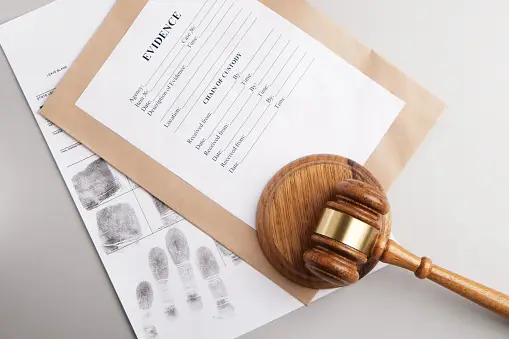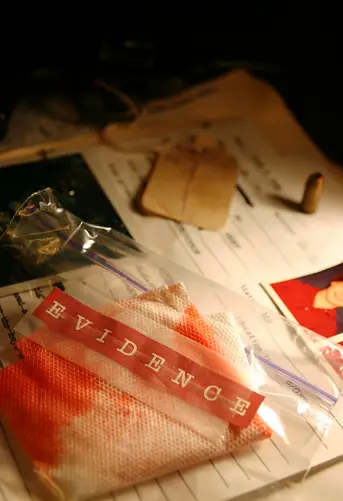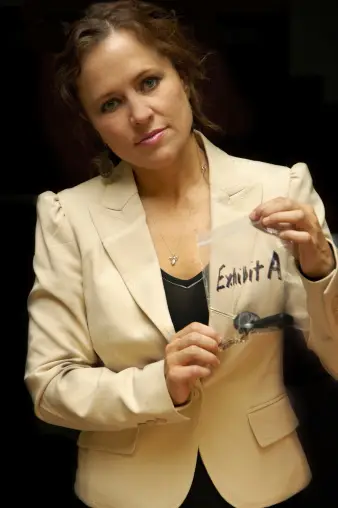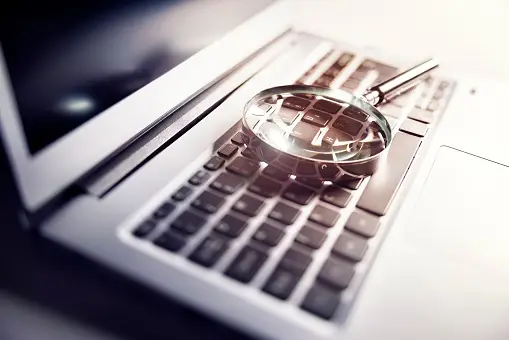In the intricate ballet of the courtroom, evidence exhibits emerge as pivotal performers, crafting stories that go beyond mere words. These visual narrators not only support legal arguments but also form their essential framework. In this blog, we will explore the critical importance of evidence exhibits, examining their subtle functions and the profound influence they exert in steering the course of justice.
What Counts As Evidence In Court?
In the intricate web of legal proceedings, evidence stands as the foundation upon which the edifice of justice is built. Its role is multifaceted, encompassing various types and forms, each carrying its own weight and significance in the quest for truth. A comprehensive exploration of what qualifies as evidence in court necessitates an in-depth examination of the diverse categories, rules governing admissibility, and the evolving landscape of evidence in the digital age.
Types of Evidence:

1. Direct Evidence:
Direct evidence serves as the absolute proof that definitively establishes a fact without the need for inference. This category includes witness accounts, real objects, and documents that explicitly support a claim. The power of direct evidence lies in its clarity, leaving little room for interpretation or doubt.
2. Circumstantial Evidence:
In contrast, circumstantial evidence relies on inference to establish a connection between presented facts and the conclusion sought. This type of evidence often involves establishing a timeline, demonstrating a motive, or presenting patterns that, when pieced together, form a compelling argument. While it may not offer the same level of immediacy as direct evidence, circumstantial evidence plays a crucial role in building a comprehensive case.
Rules of Admissibility:
The admissibility of evidence is governed by a set of rules designed to ensure its reliability and relevance. Hearsay, for instance, is generally not admissible unless it falls under specific exceptions. This rule aims to prevent the distortion of facts through secondhand information, prioritizing firsthand accounts and primary sources.
Physical evidence, such as DNA samples or weapon artifacts, carries substantial weight in court. However, its admissibility hinges on meticulous handling and presentation. The concept of chain of custody, a documented record of the chronological history of the evidence, becomes crucial in establishing its reliability and authenticity.

Documents, whether contracts, emails, or official records, are fundamental to evidentiary support. The authenticity of these documents is paramount, often requiring verification through expert testimony or other means. Establishing a clear chain of custody for digital evidence is equally vital in an age where technology dominates.
Witness testimony, though considered direct evidence, introduces an additional layer of complexity. The credibility of a witness can significantly impact the weight assigned to their testimony. Cross-examination and the exploration of potential biases become crucial elements in scrutinizing witness accounts.
Digital Evidence in the Modern Era:
Digital evidence has emerged as a formidable player in the contemporary legal landscape. From emails to social media posts, the authenticity and integrity of digital evidence are subject to scrutiny. Establishing a clear chain of custody and employing digital forensic experts are often necessary to ensure the reliability of such evidence.

The Process Of Evidence Exhibits In Court
Preliminary Case Preparation:
Before the courtroom becomes the stage, attorneys embark on a careful journey of case preparation. This initial phase involves identifying potential evidence exhibits and conducting a comprehensive analysis of their relevance to the case. Attorneys delve into the intricacies of the legal landscape, understanding the case’s nuances to select exhibits that will resonate with judges and jurors strategically.
Legal Parameters and Admissibility:
The process of evidence exhibits is intricately entwined with the legal parameters that govern their admissibility. Attorneys must navigate a complex web of rules of evidence, ensuring that the selected exhibits meet the criteria for relevance, reliability, and authenticity. This intricate dance demands a delicate balance between presenting compelling evidence and adhering to the strict legal standards that guard against the admission of prejudicial or misleading materials.
Authentication and Foundation Building:
Once chosen, evidence exhibits undergo a rigorous authentication process. Attorneys lay the foundation for each exhibit, meticulously establishing its authenticity and credibility. This often involves presenting witness testimony, verifying documentation, or using other means to demonstrate the exhibit’s legitimacy. Authentication acts as a protection against the introduction of false evidence, ensuring that only the most believable materials are presented to the court.
Strategic Presentation in Court:
As the trial unfolds, the carefully selected evidence exhibits step into the limelight. Attorneys become storytellers, weaving a narrative that seamlessly integrates exhibits into the broader legal framework. The art of presentation extends beyond the mere display of evidence; it involves contextualizing exhibits within the context of legal arguments, emphasizing their significance, and guiding the trier of fact toward a favorable interpretation.
Dynamic Interaction:
The courtroom is not a static stage but a dynamic arena where legal minds engage in a strategic dance of arguments and counterarguments. Opposing counsel may challenge presented exhibits’ genuineness, relevance, or admissibility, leading to a symphony of objections and legal duels. This dynamic interaction heightens the complexity of the process, requiring attorneys to navigate unexpected twists with agility and poise.
Juror Dynamics and Visual Persuasion:
In trials by jury, the impact of evidence exhibits is magnified. Jurors, often individuals without legal expertise, rely heavily on visual aids to understand complex information. Attorneys must navigate the delicate task of presenting compelling exhibits and ensuring that their visual elements resonate with a diverse jury. The influential power of exhibits plays a pivotal role in shaping jurors’ opinions, making exhibit presentation a nuanced art form.
Closing Arguments and Lasting Impressions:

As the trial approaches its denouement, attorneys craft closing arguments that leave a lasting imprint on the minds of judges and jurors. The impact of evidence exhibits reverberates through the courtroom, influencing the final judgment. Attorneys, having masterfully orchestrated the presentation of exhibits throughout the trial, recognize that the carefully chosen visual elements may tip the scales in favor of justice.
The Ever-Evolving Landscape:
The process of evidence exhibited in court is not a static entity but an ever-evolving landscape. As legal precedents shift and technology advances, the strategies employed in presenting exhibits must adapt. Attorneys find themselves navigating not only the traditional realms of documentary evidence but also the complexities of digital exhibits, ensuring that their presentation methods remain compelling and effective in the face of evolving legal landscapes.

The Importance of Presenting Compelling Evidence Exhibits in Legal Proceedings
Navigating the Complex Landscape:
Legal cases often traverse a complex landscape of facts, timelines, and technicalities that can challenge the understanding of judges, juries, and even experienced legal professionals. Evidence exhibits, ranging from carefully crafted charts to media presentations, serve as indispensable navigational tools. By distilling intricate details into accessible visual formats, these exhibits function as illuminating signposts, guiding stakeholders through the labyrinth of legal intricacies. Attorneys strategically leverage these exhibits to demystify complexity. They ensure that the essence of their arguments remains clear and digestible amidst the legal intricacies.
The Persuasive Power of Visual Storytelling:
At the heart of compelling evidence exhibits lies their unique ability to exceed the limitations of verbal communication. While legal arguments form the foundation of a case, the strategic integration of visual elements adds a persuasive layer that resonates deeply with the human psyche. A poignant photograph, a gripping video, or a thoughtfully designed chart possesses the capacity to evoke emotions, create empathy, and etch a lasting impression on the minds of those responsible for judging the case. Attorneys adept at harnessing the influential power of visual storytelling gain a strategic advantage. The visual impact of evidence exhibits can often leave an unforgettable mark that words alone may struggle to achieve.
Efficiency in Presentation:
Time is a precious commodity in the courtroom. Also, the judicious use of evidence exhibits contributes significantly to the efficiency of legal proceedings. Instead of relying solely on lengthy verbal descriptions, attorneys can expedite the presentation of key facts through visuals. This streamlines the trial process and ensures a more focused and impactful delivery of the case. The efficiency gains realized through the strategic incorporation of evidence exhibits underscore their instrumental role in fostering a courtroom environment that values both expediency and effectiveness.
Embracing the Digital Frontier:

In an era defined by technological improvements, evidence exhibits have evolved beyond traditional charts and photographs to encompass a dynamic array of media presentations. Attorneys now seamlessly integrate video footage, animations, and interactive displays into their courtroom display. This aligns with the expectations of a tech-savvy audience and enhances engagement and information retention. The fusion of traditional legal arguments with advanced visuals propels legal advocacy into the digital frontier. Here, attorneys adept at harnessing technology wield a potent toolset that transcends conventional courtroom dynamics.
Shaping the Narrative:
Beyond their role in simplifying complexity, persuading through impact, and expediting the legal process, evidence exhibits play a pivotal role in shaping the narrative of a case. Attorneys carefully curate these exhibits to tell a compelling, cohesive story that aligns with their legal strategy. The strategic selection and presentation of evidence become a form of visual rhetoric. This allows attorneys to mold perceptions and influence the trajectory of the case. In a courtroom where narratives collide, evidence exhibits stand as storytellers, weaving a visual narrative that resonates with the collective consciousness of those involved in the legal process.

Conclusion:
In conclusion, the importance of presenting compelling evidence exhibits in legal proceedings transcends their role as mere visual aids. These exhibits are essential components of effective advocacy, offering a navigational compass through legal complexities, infusing persuasive power into arguments, enhancing efficiency, accepting technological advancements, and ultimately shaping the narrative that defines the pursuit of justice. Attorneys who recognize the transformative potential of evidence exhibits navigate the legal landscape as advocates and as architects of compelling and visually resonant legal narratives.
How do attorneys strategically present evidence exhibits in court?
Attorneys become storytellers, strategically integrating evidence exhibits into the legal framework. The art of presentation involves contextualizing exhibits within legal arguments, emphasizing their significance, and guiding the trier of fact toward a favorable interpretation.
How do evidence exhibits impact juror dynamics in a trial?
In trials by jury, evidence exhibits play a magnified role. Jurors, often without legal expertise, heavily rely on visual aids to comprehend complex information. The persuasive power of exhibits becomes crucial in shaping the opinions of jurors, making the exhibit presentation process a nuanced art form.
How does the ever-evolving legal landscape impact the presentation of evidence exhibits?
The process of evidence exhibits is not static but an ever-evolving landscape. As legal precedents shift and technology advances, attorneys must adapt strategies in presenting exhibits. Navigating traditional realms and the complexities of digital exhibits ensures effective presentation methods in the face of evolving legal landscapes.
Why is the persuasive power of visual storytelling crucial in legal proceedings?
The persuasive power of visual storytelling, embodied in evidence exhibits, goes beyond verbal communication. It resonates deeply with the human psyche, evoking emotions, creating empathy, and leaving a lasting impression on those responsible for adjudicating a case.
What role do evidence exhibits play in shaping the narrative of a legal case?
Evidence exhibits play a pivotal role in shaping the narrative of a case. Attorneys carefully curate exhibits to tell a compelling and cohesive story that aligns with their legal strategy. This strategic selection and presentation become a form of visual rhetoric, molding perceptions and influencing the trajectory of the case.
Other Related Articles:
- Social Media and Text Messaging How Technology Impacts Evidence in a Family Law Case
- The Role of Evidence in Court Hearings: A Deep Dive into Legal Proceedings
- The Importance of Presenting Compelling Evidence Exhibits in Legal Proceedings
- Common Mistakes to Avoid When Handling Evidence Exhibits in Trials
- The Evolution of Forensic Science and Its Impact on Evidence Exhibits
- A Guide to Creating Persuasive Evidence Exhibits for Court Cases
- Challenges Faced in Admitting Digital Evidence Exhibits in Legal Cases
- Attorneys Collect Evidence from Social Media for Family Law Cases
- Seeking A Modification for Full Custody? Evidence Is Key
- Social media evidence can influence divorce negotiations
Oluwatukesi Joseph is a Content Writer at LOBF. He holds a Master’s Degree from Obafemi Awolowo University in Architecture, However, his love for writing and content creation has transitioned him into the writing and content marketing field. He has gained relevant certification from other notable Universities where he developed a strong foundation in content marketing and writing.
Outside of work, Joseph enjoys spending quality time with friends and family and playing chess, which he finds often complements his professional pursuits. Joseph is excited to be part of the dynamic team at The Law Office of Bryan Fagan, contributing his expertise to spreading the good news of LOBF to Families across Texas.




